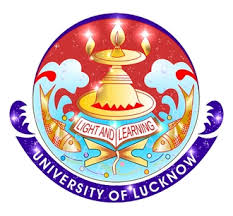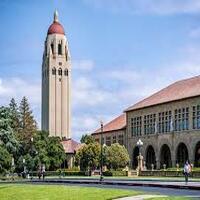University of Lucknow: A Comprehensive Examination
1. Introduction: A Pinnacle of North Indian Higher Education
University of Lucknow Established in 1920 and tracing its roots to 1867, the University of Lucknow (LU) stands as one of India’s oldest and most prestigious state universities (timeshighereducation.com). Nestled in the heart of Lucknow—the capital of Uttar Pradesh and a historic center of the Nawabs—the university holds the distinction of being the first state university in UP to earn UGC “Category‑I” status and the highest NAAC rating of A++, making it a flagship institution for public education in the state (archanamehrotra.in).
Spanning a sprawling 219-acre main campus and an additional Jankipuram satellite campus, LU is a teaching, residential, and affiliating university with over 160 affiliated colleges and an academic strength nearing 19,000 students (timeshighereducation.com). It offers a wide spectrum of programs across arts, science, professional studies, Ayurveda, fine arts, and more—solidifying its role as an engine for regional educational growth.
2. Historical Evolution: From Canning College to a Modern University
2.1 Colonial Roots in the 19th Century
The university’s journey begins with Canning College, founded in 1864 in honor of Lord Canning, the Viceroy of India. Initially housed in various venues across the city—including Aminabad and Kaisar Bagh—it was finally settled in its own Cambridge-inspired structure by 1878. The college played a dual role: educating elites and forging educational links during British rule in Oudh (now Awadh) (shiksha.com, en.wikipedia.org).
2.2 Establishment of the University (1919–1921)
The push for a full-fledged university emerged in 1919, led by Raja Mohammad Ali Khan Mahmudabad and supported by Sir Harcourt Butler. The plan was to build a unitary, teaching, residential institution comprising faculties in arts, science, medicine, law, commerce, and more. A legislative bill was passed by 1920, and LU officially began operations in July 1921, inheriting its academic foundation from Canning College, King George’s Medical College (now KGMU), and Isabella Thoburn College (lkouniv.ac.in).
2.3 Enrichment Through Heritage Points
In 2023, LU unveiled a Heritage Point near its Zoology Department to preserve century-old bricks and a wooden mango tree log—honoring its legacy and landmark status (hindustantimes.com).
3. Campus and Infrastructure: Blending History with Modernity
3.1 Main and Jankipuram Campuses
Located in Badshah Bagh, the 219-acre main campus houses older colonial buildings, student residences, administrative offices, Tagore Library, and extensive green spaces. A secondary campus in Jankipuram expands space for academic departments, research centers, and lecture halls (timeshighereducation.com).
3.2 Architectural Heritage
The university’s early campus architecture takes inspiration from Victorian-Gothic and colonial styles. Notable structures include Canning College’s historic building, King George’s Medical College, and the Faculty of Fine Arts—founded in 1911 and housed in its own purpose-built site by 1911 (timeshighereducation.com).
3.3 Tagore Library: A Knowledge Epicenter
Originally the Canning College library, the Tagore Library was officially established in 1920 and moved into its dedicated building in 1941. It holds an extensive collection and underwent a significant 2024 renovation—adding an automated system, improved lighting, and a monumental statue of Rabindranath Tagore (lkouniv.ac.in).
3.4 Supporting Facilities
LU is recognized for its rich infrastructure: a fully computerized central library with over half a million volumes, well-equipped laboratories, student hostels (18+), a yoga and NCC center, auditorium, sports grounds, and well-structured cafeterias (archanamehrotra.in).
4. Academic Structure and Programs
4.1 Faculties and Departments
LU offers education through 10 faculties—Arts, Commerce, Science, Law, Education, Engineering & Technology, Ayurveda, Unani, Fine Arts, and Yoga & Alternative Medicine—across more than 45 departments with over 100 UG/PG programs (shiksha.com).
4.2 Professional and Technical Studies
LU’s engineering and technology programs are recognized by AICTE, while law and teacher education programs hold BCI and NCTE approval, respectively. It also offers degree and diploma courses in health sciences, social work, and emerging disciplines (shiksha.com).
4.3 Supporting Cadres: Distance Learning & International Collaboration
LU operates a distance education wing, is a member of the Commonwealth Universities Association, and has MoUs with 34 national and global institutions—including California State University and University of Pittsburgh (getmyuni.com).
4.4 Centenary Curriculum Integration
Honoring a century of academic service, LU introduced a compulsory elective on its own history within undergraduate and postgraduate programs in 2020—marking the first Indian university to do so (timesofindia.indiatimes.com).
5. Accolades, Recognition & Rankings
5.1 National Ranking & Accreditation
LU secured the top NAAC A++ rating, achieved UGC Category I status, and achieved fifth place among urban state universities in the IIRF 2025, securing a score of 951.62/1000 (selectyouruniversity.com).
5.2 NIRF and Thematic Rankings
It ranked 97th overall and 32nd among state public universities in NIRF 2024, while securing 23rd place in the law category. Meanwhile, Times Higher Education ranks it within the 1501+ band globally (shiksha.com).
5.3 Facelift and Renewed Reputation
Following a period of decline in the late 20th century—characterized by political interference and administrative challenges from the 1970s to the 1990s—LU began its revival in the 2000s. Academics have rebounded, infrastructure improved, and student life restored (timesofindia.indiatimes.com).
6. Governance & Leadership
6.1 Administrative Structure
The Governor of Uttar Pradesh serves as Chancellor, with academic leadership exercised by the Vice-Chancellor—currently Prof. Alok Kumar Rai, the youngest VC of LU, appointed in 2019 (lkouniv.ac.in). LU also features Executive and Academic Councils, Finance Committees, Proctorial Boards, and Deans overseeing various academic divisions (lkouniv.ac.in).
6.2 Faculty & Staffing Investments
As of 2025, LU affiliates over 550 colleges and has formalized appointments for 63 faculty members—including assistant, associate, and full professors—strengthening its human capital .
7. Student Life & Cultural Fabric
7.1 Vibrant Academics & Extracurriculars
LU champions student expression through societies like Sanskritiki (culture), Lekh Darpan (literature), Abhivyakti (visual arts), and Talam (music) (institute.careerguide.com). The inclusion of heritage studies and centenary celebrations deepen student engagement.
7.2 Sports and Wellness
With expansive grounds, yoga centers, athletic meets, and NCC/NSS wings, LU maintains a strong commitment to wellness and holistic development .
7.3 Community Outreach
The students’ union drives campus activism, organizes blood drives, and hosts seminars. Local NGOs and social initiatives enhance the university’s contribution to societal welfare .
8. Placements, Career Support & Industry Relations
8.1 Career Services and Placements
LU’s placement statistics for 2023–24 reflect robust performance—UG and PG students averaging salaries up to ₹7.95 LPA and ₹7.45 LPA respectively, with top packages reaching ₹23.6 LPA from companies such as ONGC, HCL, and Samsung (selectyouruniversity.com).
8.2 Scholarships and Welfare
The University supports underprivileged students through schemes like the Chhatra Kalyan Scholarship and Karmyogi Scheme, underlining its commitment to inclusive access (shiksha.com).
8.3 Affiliations and Course Expansion
LU has granted affiliations to 11 new private colleges and expanded program offerings in LLM, Visual Arts, BCA, Psychology, and more—enhancing academic reach (timesofindia.indiatimes.com).
9. Strengths, Challenges & Future Vision
9.1 Core Strengths
- Heritage and Legacy: A century of academic excellence and historic infrastructure.
- Top-tier Accreditation: UGC Category I, NAAC A++, and AICTE/BCI/NCTE approvals.
- Campus Infrastructure: Modern libraries, labs, hostels, and sports facilities.
- Recognition: High IIRF performance and consistent NIRF standings.
- Wide Academic Spectrum: 10 faculties, 100+ programs, 550+ affiliates.
9.2 Current Challenges
- Maintaining academic quality across an expansive affiliate network.
- Sustaining funding and further modernizing infrastructure.
- Rebuilding consistent faculty staffing and student-teacher ratios.
- Overcoming remnants of past politicization and ensuring meritocracy across appointments (archanamehrotra.in, collegesearch.in, timesofindia.indiatimes.com).
9.3 Strategic Initiatives
- Leveraging the centenary momentum through curriculum innovation and heritage programs.
- Strengthening MOUs for research, technology exchange, and curriculum upgrades.
- Digital transformations, e-governance for student monitoring, and infrastructure upgrades.
- Enhancing the campus footprint via Jankipuram, Northeast placements, and urban mechanisms (getmyuni.com, selectyouruniversity.com).
10. Alumni and Notable Contributions
LU takes pride in a distinguished alumni base, including Shankar Dayal Sharma (former President of India), and authors, poets, bureaucrats, and legal luminaries—embodying its legacy of public leadership (timeshighereducation.com). Its Faculty of Fine Arts, since 1911, nurtured luminaries such as Juhi Chaturvedi—proving its cultural impact (en.wikipedia.org).
11. Conclusion: The Road Ahead for Suffusing Excellence
From a modest colonial college to a contemporary academic powerhouse, the University of Lucknow reflects a journey of resilience, resurgence, and regional pride. Its strengths—in academic breadth, infrastructural depth, accreditation accolades, and a deep-rooted cultural mooring—are counterbalanced by the persistent need for investment in faculties, research, modernization, and governance.
Going forward, LU’s priorities include:
- Elevating teaching standards across its affiliate network,
- Deepening industry collaborations,
- Digitizing services and academic delivery,
- Preserving heritage while innovating curricula,
- Enhancing inclusivity through scholarship and mentorship programs.
For students aspiring to a blend of heritage-rich learning, urban exposure, and meaningful career outcomes, Lucknow University offers a robust and evolving academic environment. Its one-hundred-year legacy remains both a foundation and a springboard for the future—anchoring it as a vital institution in India’s higher education landscape.
Swift Summary: LU at a Glance
| Aspect | Highlights |
|---|---|
| Established | 1920; roots from 1864 |
| Campus Size | 219 acres + Jankipuram |
| Accreditations | UGC Category I, NAAC A++ |
| Faculties | 10 across diverse streams |
| Programs | 100+ UG, PG & professional |
| Affiliated Colleges | ~550 |
| Students | ~19,000 |
| Library | Tagore Central Library (renewed 2024) |
| Rankings | IIRF 5th in urban state; NIRF 97th overall, 23rd (Law); THE 1501+ |
| Placements | UG, PG avg ₹7–8 LPA; Top ₹23.6 LPA |
| Infrastructure | Heritage buildings, hostels, labs |
| Strengths | Legacy, approval, infrastructure |
| Challenges | Funding, staffing, affiliate oversight |




